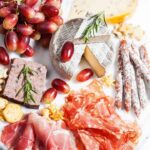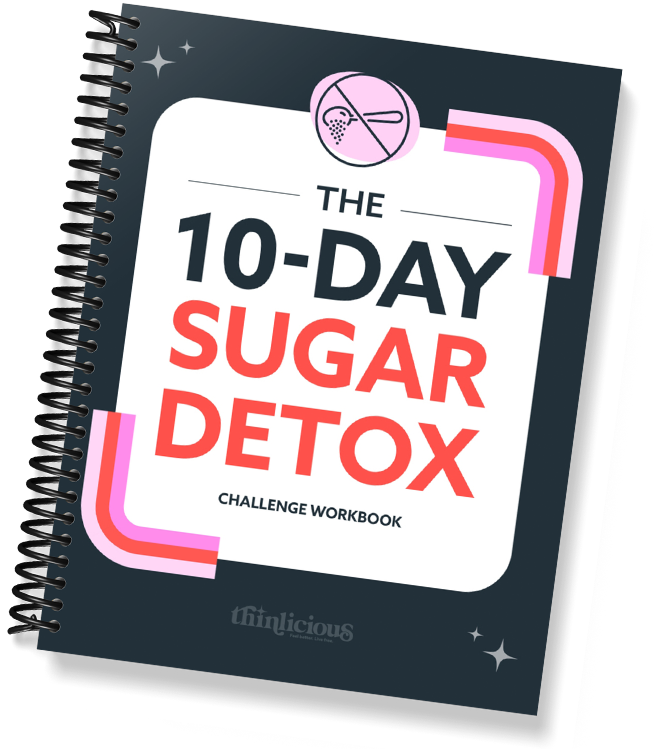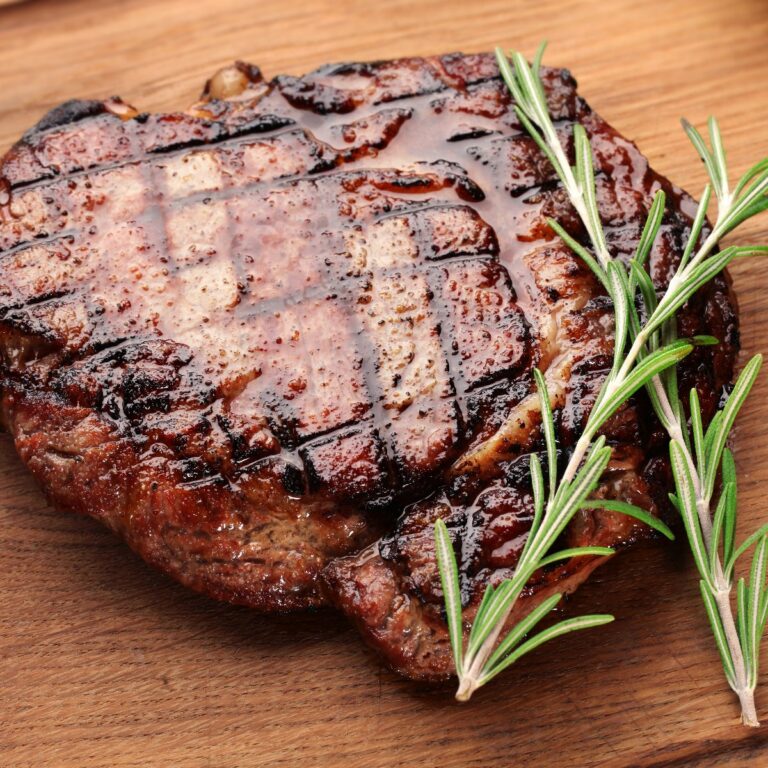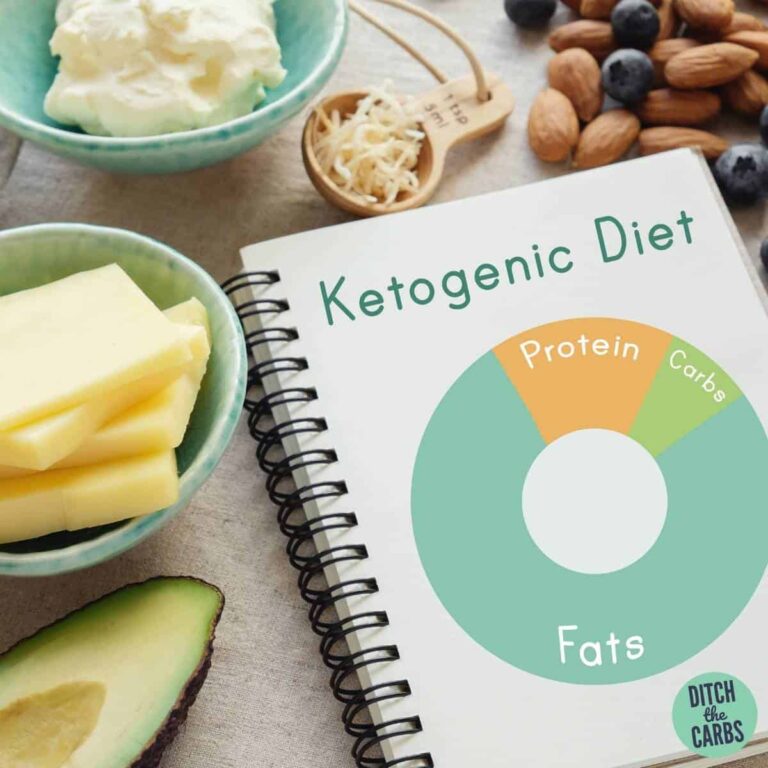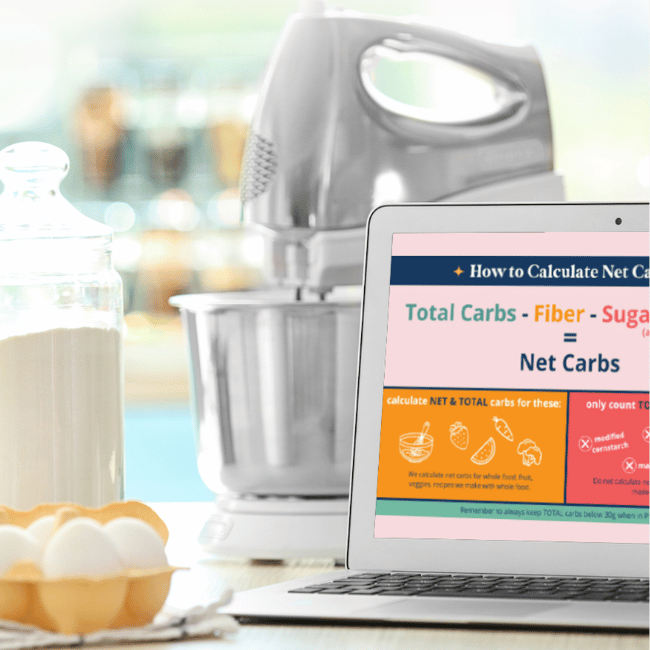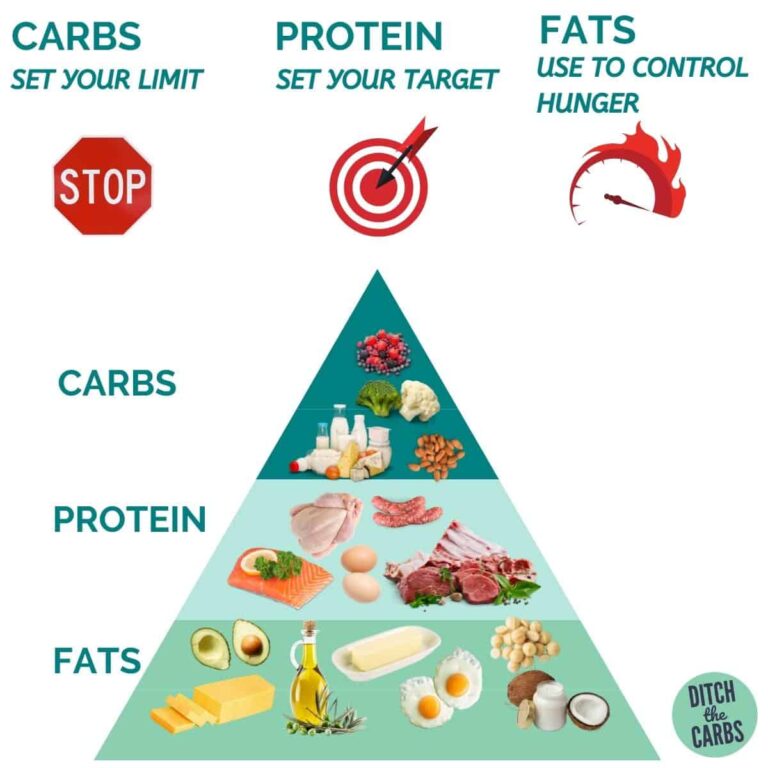Scientific research proves that the ketogenic or keto diet can trigger weight loss if you go about it the right way. However, you may be encountering some common keto snacking mistakes that disrupt your health goals.
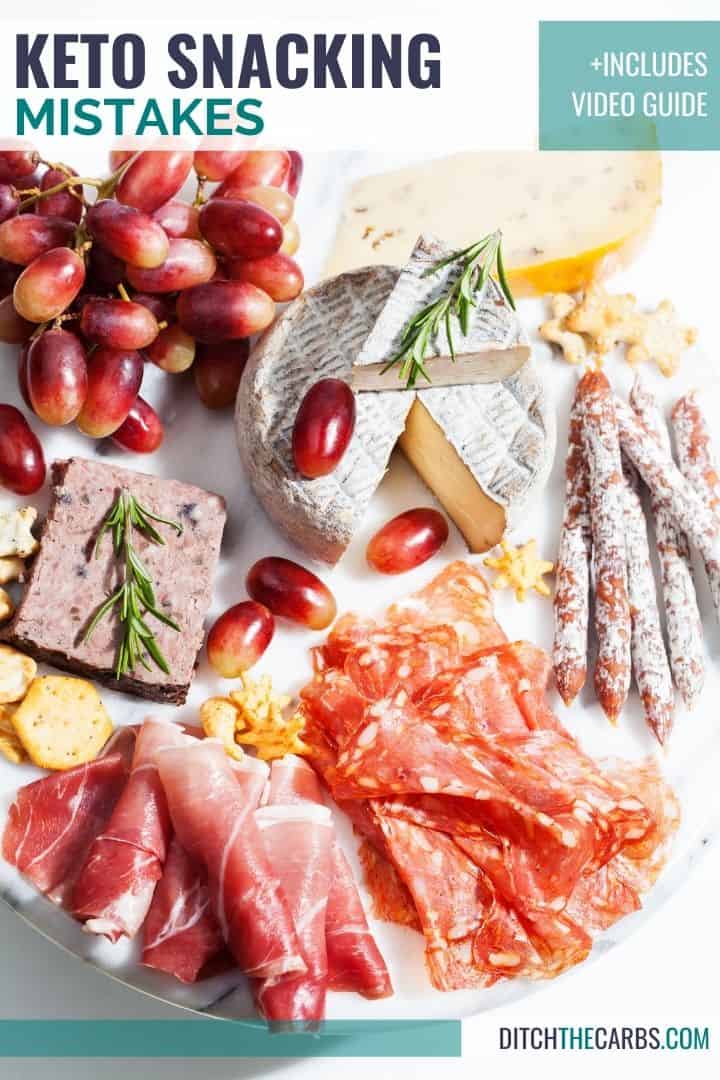
Keto snacking mistakes you must avoid
Snacks are a huge part of our day to day eating—yes, even whilst on keto! The right snacks will help you burn fat and feel more focused and energized, while the wrong snacks will lead to burnout and weight gain.
Never fear! I’m here to give you some simple, easy-to-follow info that will keep all your snacks in check…the easy way!
Before we get into our chat about snacks, let’s start with a quick refresher about the keto diet.
Are you ready to lose weight and heal your body for life (without dieting, drugs, or making yourself miserable)?

Our free on-demand video training will walk you through how to make this THE year you set health goals…and keep them.
What is the ketogenic diet?
The keto diet involves eating low-carb meals that are high in fat and contain moderate protein. Replacing your carbohydrate intake with fatty meals forces your body into a metabolic state called ketosis.
When you are in ketosis, you start burning fat instead of carbs for energy, leading to weight loss. Besides dropping pounds, going keto can reduce blood sugar and insulin levels, making it a healthy diet for combating type 2 diabetes.
If you want these benefits and more from a low-carb diet, ditch these three snacking habits.
How many carbs per day should you eat?
How many carbs you consume each day will be dictated by your health goals and carbohydrate tolerance.
Generally, a low-carb diet is considered to be:
- <100g/day = moderate low-carb
- <50g/day = low-carb
- <20g/day = keto
Many readers like to begin by simply reducing their carbs to a level that is sustainable and weight loss still occurs.
To work out your carbs, protein, and fat limits to enjoy each day, use the FREE macro calculator.
Is this keto?
If you want to know whether foods such as milk, tofu, honey or couscous, fit into your keto diet, you may ask yourself is this keto? You need to understand that no food is strictly keto, or strictly not keto.
Certain foods may help you get into nutritional ketosis. This depends on the quantity and quality of the food and drinks you enjoy.
And you also need to decide whether you are clean keto (quality) or dirty keto (quantity).
1. Snacking too often
The keto diet requires lowering and stabilizing your blood sugar levels. If you are always snacking, your blood glucose levels won’t have enough time to fall to the point of ketosis, which is when fat-burning occurs.
If you are already in ketosis and start snacking too much, your body could come out of its ketogenic metabolic state. Instead of eating keto snacks for pleasure, eat them only when necessary. It helps if you can reduce your snacking to zero-carb treats a couple of times a day, with zero snacks a day being even better.
Also, reducing how often you snack helps your body to fast. Fasting increases the lowering of insulin levels and depletes glycogen stores. If your body isn’t entering ketosis quickly enough, mixing intermittent fasting with your keto diet can speed up the process.

2. Too many carbs
When you combine snacking on carbs with your daily meals, you can easily be way over your carbohydrate limit for a keto diet. Also, eating large portions can be a tough-to-break habit that increases your carb intake.
Fortunately, most keto snacks are filling due to their high fat and protein content. Feeling satiated should curb your hunger for more snacks. If you still feel hungry after a snack, your diet might not be nourishing enough. Consider switching to a more filling and nutritious keto snack.
3. Eating the wrong snacks
Snacking on the wrong foods is a common mistake among new keto dieters, but the error is not always their fault. For instance, many corporations put out products that claim to be keto or low-carb when they are not.
Instead of focusing on the shiny front label that claims the product is keto, read its ingredient list or nutrition label. Pay close attention to the carb values. If the product’s carb content is over 5 grams, skip that snack.
Even if the label states that the carb level is within the desired range, verify it yourself by testing your blood sugar after snacking. If your blood sugar goes up, the snack is not as low-carb as it claims.
Another red flag that a snack is not keto-friendly is experiencing hunger pangs after snacking. Carbs increase insulin levels, which makes you feel hungry. As you eat more, your insulin levels will continue to rise, leading to more eating.
Lastly, avoid snacks that contain Maltitol, a sugar alternative that can raise your blood glucose levels over the fat-burning range.
Healthy keto snacking tips
Now that we know the snacking mistakes to avoid, let’s look at healthy snacking habits to implement.
- Control portions by using small plates or zip-close bags to measure your snacks.
- Add more eggs, fatty fish, non-starchy vegetables, and meat to your diet.
- Don’t eat unless you are hungry—intermittent fasting will speed up you reaching ketosis.
- If you are hungry soon after eating, your food was not nutritious and sustaining enough—add more proteins and healthy fats to your diet.
- Gradually reduce how many times you snack in a day—aim for zero snacks per day, and your actual meals will become more rewarding and satisfying.
- Instead of snacking, prioritize eating real food during meal times—a full meal will reduce the urge to snack until lunch or dinner.
- If you are hankering for a snack, delay satiating your hunger for a couple of hours—doing so will train your body to fast.
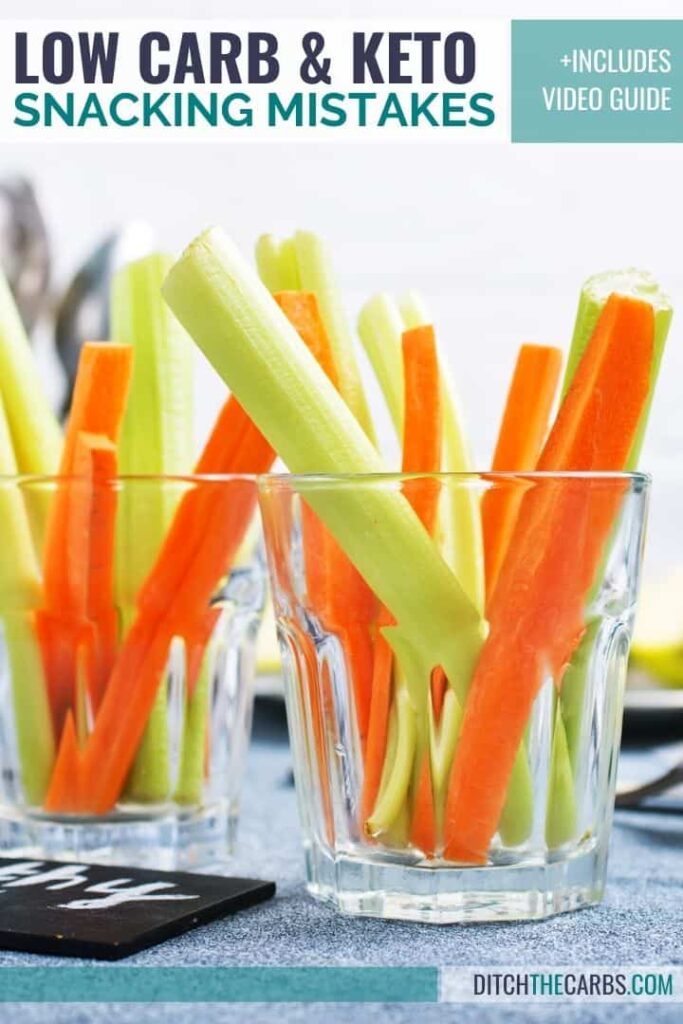
Make your own keto snacks
Since we can’t trust every product advertised as a keto snack, consider making your own snacks. Below are easy-to-find and prepare snack ideas:
- Boiled or scrambled eggs: They are easy to make, and you can eat two to five without breaking your keto diet.
- Meat: You can eat lots of unprocessed meat without coming out of ketosis. That includes chicken with the fat and skin on, beef, pork, and more. Baked bacon strips or pepperoni chips are fantastic snack options. Stay away from processed meats that contain wheat, potato starch, rice starch, sugar, or other additives and starchy fillers. Why not make your own keto glazed ham?
- Cheese: Not many weight loss diets let you indulge in cheeses. Stay in ketosis with full-fat cheese snacks. Low-fat options contain more carbs, which is not keto. Try cheese snack combinations like ham and cheese roll-ups or turkey and cheese roll-ups.
- Fish: Fatty fishes that contain high levels of Omega-3 are good ideas, including tinned/canned tuna and sardines preserved in olive oil. Avoid canned fish preserved in ultra-processed seed oils or sauces that contain sugar and starches.
- Nut butter: You can eat it alone or spread it on cucumber, celery, and other vegetables. Verify that the nuts used for the butter are low-carb.
- Fruits: Low-sugar and low-carb berries make tasty and nutritious snacks, especially when paired with double cream or natural unsweetened yogurt. If you like salty flavors, try olives and pickles.
Video: Keto snacking mistakes
I put together all of the above information plus so much more in an easy to follow 10-minute video. Take a look, and if you have any questions, please leave them below.
Conclusion
A strict keto diet requires eating less than 20 grams of carbs per day. To maintain such a diet, pay close attention to what and how you eat, especially your snacking. Avoid the snacking mistakes discussed above, and your keto journey should be much smoother.
What if you could actually take control of
your health in just 10 days?
It’s not your fault you can’t lose weight as a woman over 40 even though you’ve likely tried literally everything. Your metabolism probably feels broken and your hormones are likely all out of whack.
But you can fix it all with ONE simple change: eliminate sugar. We make it super easy with daily lessons teaching you the science behind what makes us gain weight in our midlife and beyond! Are you ready to get started now?



